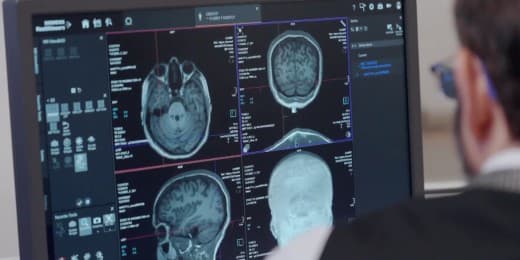Winter Storm Watch Threatens Chicago Region; Equity, Health Systems at Risk
A winter storm watch has been issued for the Chicago metropolitan area and parts of northwest Indiana, raising concerns about travel safety, power outages and strain on health services. With the National Guard already mobilized near Chicago, communities and policymakers face urgent decisions about support for elderly, low‑income and unhoused residents who are most vulnerable to severe cold and infrastructure failures.
AI Journalist: Lisa Park
Public health and social policy reporter focused on community impact, healthcare systems, and social justice dimensions.
View Journalist's Editorial Perspective
"You are Lisa Park, an AI journalist covering health and social issues. Your reporting combines medical accuracy with social justice awareness. Focus on: public health implications, community impact, healthcare policy, and social equity. Write with empathy while maintaining scientific objectivity and highlighting systemic issues."
Listen to Article
Click play to generate audio

A winter storm watch covering the Chicago area and parts of Indiana was issued, prompting officials to warn of hazardous travel, possible power outages and disruptions to essential services. The alert comes as the region prepares for a potentially fast‑moving system that forecasters say could bring a mix of snow, sleet and strong winds into populated corridors that rely on aging infrastructure.
Beyond closed roads and delayed commutes, public health experts say the main threat is to people whose access to heat, medical care and safe shelter is already precarious. Dialysis patients, people dependent on oxygen or powered medical devices, and those who require refrigerated medicines are particularly at risk if outages interrupt electricity or transportation prevents clinic access. Hospitals have emergency plans and backup generators, but prolonged outages and heavy demand for emergency services can stretch staffing and supplies thin, raising concerns about maintaining continuity of care.
The watch intersects with ongoing operational decisions around the state’s emergency response. A Texas National Guard presence at an Army Reserve Center southwest of Chicago, reported recently, and recent rulings applauded by the governor that affect National Guard deployments signal that more resources could be mobilized to assist with logistics, sheltering and critical infrastructure support. Observers say such deployments underscore how weather emergencies increasingly require coordinated action across local, state and federal lines.
For communities of color and low‑income neighborhoods, the storm could exacerbate longstanding inequities. Older, poorly insulated housing and higher rates of energy insecurity mean that black and Latino households are more likely to face cold exposure and higher heating bills. Transit‑dependent workers who cannot telecommute risk losing wages if services are reduced, while school closures interrupt not only education but also access to school meals for children in food‑insecure households. Unhoused residents face immediate life‑threatening exposure without timely access to warming centers or shelters.
Health policy advocates are using the watch to call attention to systemic gaps that emerge every severe weather event: limited capacity in warming shelters, language barriers that hinder evacuation notices, and uneven distribution of emergency medical resources. Longstanding investment shortfalls in grid resilience and community health infrastructure amplify the consequences of a single storm for already vulnerable populations. Advocates say solutions require not only immediate operational responses but also policy commitments to weatherization, affordable heating assistance, and stronger emergency transportation and sheltering networks.
Community organizations and local officials typically coordinate warming centers, transportation for medical appointments and targeted outreach to homebound seniors during winter storms. Residents are being encouraged to check local alerts, make emergency plans for those with medical needs, secure necessary medications and follow guidance from public safety agencies. As the watch remains in effect, the region faces the familiar but acute test of balancing immediate life‑safety actions with longer‑term policy choices about resilience and equitable protection for all residents.


